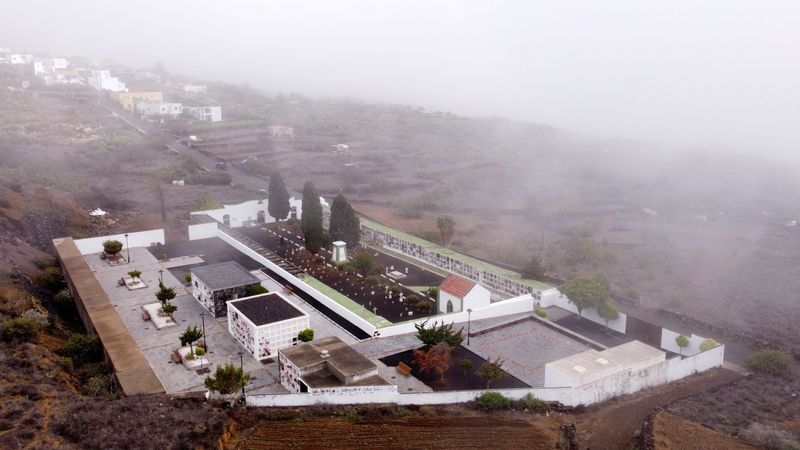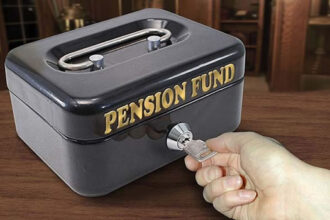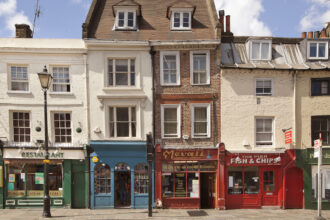By Joan Faus
VALVERDE, Spain (Reuters) – Two years ago, forensic pathologist Modesto Martinez, 68, moved to the small Canary island of El Hierro with plans to retire. Instead, he has been called in day and night to tend to dead African migrants, as they arrive by sea in increasing numbers.
“I thought El Hierro would be quieter, with two or three deaths a year,” said Martinez, originally from Tenerife, as he drove his Humvee car on a windy October Sunday to a funeral home to autopsy another body.
So far this year, 33 irregular migrants have arrived dead or shortly after reaching El Hierro, according to official data. In 2023, that number was 11. In 2022, there was one.
The number of migrants arriving from the West African coast in the Spanish archipelago has reached a record level. But the rate of migrants going missing or dying during the journey is increasing five times faster, according to the latest available data.
Martinez is the only medical examiner in El Hierro, which has a population of 11,400 and is a booming destination for migrants at a time when irregular arrivals to Europe have declined overall.
As some European countries crack down hard on immigration, the pathologist's plight highlights the increased risks taken by those pushed to try to rebuild their lives, as well as the dark months endured by their families searching for news of them.
The body that Martinez was about to examine was a man, African, aged between 30 and 35 years old. Like thousands of others, he had made a perilous Atlantic crossing of around 2,000 km (1,242 miles) from West Africa, crammed into an open-top boat. .
He died the day before, apparently from hypothermia caused by many hours spent in cold, wet conditions without shelter.
Since the start of the year, around 20,000 irregular migrants have arrived in El Hierro, according to the Red Cross. This represents around half of the total of more than 40,000 people who reached the Canary Islands during this period, which in itself is a new record.
Migrant arrivals in the Canaries increased by 12% between January and October, according to the Spanish Interior Ministry. But the number of dead or missing increased by 61% during the same period, to reach 891, according to estimates by the International Organization for Migration (IOM).
He says the road is the second deadliest in the world, and because only partial data is available, his estimates are conservative. The Red Cross estimates that the majority of dead migrants never even reach the Canaries, but either drown or their bodies are thrown overboard.
Spain does not have an official database of deceased migrants: it only counts those who arrived alive, said an Interior Ministry spokesperson.
“The causes of death are almost always the same: dehydration, hypothermia and consumption of sea water,” Martinez explained.
The migrants barely eat or drink clean water during the roughly six-day crossing, Martinez said: When he opens a corpse, he finds no remains of food and any trace of water “smells l 'sea water”.
“BATHIE BARRY”
In this case, authorities in El Hierro had a lead on the man's identity. Another migrant who arrived on the same boat came forward, saying he was a relative and that the dead man came from Senegal and was called Bathie Barry.
Confirming the identity of the dead can take months. Most migrants throw their ID cards overboard before reaching shore, for fear of being deported, a Spanish security source said. The logic is that if they are not identified, it will be more difficult for authorities to prove their country of origin and send them back.
Martinez noted in the autopsy report that the deceased had several broken and missing teeth.
The pathologist took a blood sample. He would use it to send DNA to a laboratory in Tenerife, which would upload the information to a missing persons database to compare with records of those already reported.
This process can take up to two months, Martinez said.
In his experience, he added, no matches are found in more than 90% of migrant deaths: it is too complicated to trace relatives or ask them to securely provide samples of DNA from Africa.
Two of the three forensic officers based in El Hierro took fingerprints and photos of the body to upload them to a law enforcement database.
MISSING INTO THE OCEAN
Increased migration to the Canaries is one of several factors behind the increase in deaths and disappearances, said Andrea Garcia Borja, acting coordinator of IOM's Missing Migrants Project. It lists estimates of deaths and disappearances via press articles, official sources and independent investigations.
Boats come from further afield in West Africa, with smugglers loading up to 300 people on each boat, she said. Smuggling networks have exploited instability in the Sahel region, where an Islamist uprising is raging, and are sending more boats than in the past, according to the European Union border agency Frontex.
In September, only 27 migrants were found alive after a boat carrying 84 people capsized, according to the Spanish coast guard. It was the worst shipwreck ever recorded in the Canaries; a local judge is investigating the accident.
Nine people were buried in El Hierro. The others are believed to have sunk in the ocean.
Martinez said she received a call at 3 a.m. to tend to the dead.
At the time, El Hierro only had two cadaver refrigerators, each capable of holding one body. So Martinez placed the other seven corpses in a room normally used for wakes, which can be cooled to close to zero degrees Celsius.
Martinez, whose grandfather embalmed the body of former Spanish dictator Francisco Franco in 1975, said he had never worked with migrants before coming to the island.
The absence of grieving families with their pressing questions, he said, makes it easier to maintain a clinical distance.
“The emotional attachment that comes with death is missing,” he said.
The island has an autopsy table, in a non-air-conditioned room. Typical fall midday temperatures reach around 20 degrees Celsius (68 Fahrenheit), so pathologists usually open a door to the street, blocking the view with a hospital screen.
IN THE VACUUM
El Hierro is just one example of the void migrants are thrown into when they board smugglers' boats.
“To my knowledge, there is no specific protocol for the search and identification of missing migrants in Spain, in any European country or in the United States,” said Borja, the IOM's missing migrants official.
The IOM said in a 2021 report that Spain lacked specific procedures related to the search, investigation and identification of missing or dead migrants. He called for the creation of a centralized mechanism.
An IOM Spain spokesperson said he did not know whether Spain had implemented the recommendations. The Spanish Justice Ministry did not respond to questions about whether this was the case.
After the September sinking, the NGO Caminando Fronteras – which runs a helpline for migrant boats in distress – said Spanish authorities had applied double standards in their response to migrant deaths compared to to other maritime victims.
“Spain does not apply the same laws and protocols to someone who suffers a tragedy on a yacht or fishing boat as to someone who dies on a migrant boat,” the founder of the association told Reuters. NGO, Helena Maleno.
A spokesperson for Spain's Transport Ministry, which oversees maritime policy, said the maritime authority does not investigate migrant boat accidents to determine possible administrative failures because the boats are not certified and lack information about their property.
Foreign diplomatic offices can cooperate in processing death declarations following an air or sea accident, but the Spanish foreign and justice ministries did not respond to requests for comment on when they did so. .
The Spanish Interior Ministry spokesperson said the Spanish justice system and Civil Guard police investigate cases of migrant deaths at sea if there is evidence of missing bodies, but declined to give more details.
To try to fill this gap, the Red Cross launched a program in 2021 to collect information on people who disappear or die during their migration to the Canaries.
In about 40% of cases, the Red Cross informally identifies dead migrants through evidence or interviews with friends or family, said Silvia Cruz, who works in the program.
“LITTLE TRIBUTE”
The day after the autopsy, the body of the deceased migrant was buried across the island in a concrete grave located in a wall of the El Pinar cemetery, at the foot of the lava fields and surrounded by goats and shrubs .
It bore his file number, the date of his death, and the words “Bathie Barry” and “Immigrant.” Migrants occupy more than 30, mostly anonymous, locations out of nearly 1,000 in the burial walls.
None of those traveling with Barry were able to attend the ceremony. They were placed in police custody or in hospital.
The Red Cross contacted the shelter where his loved one was staying to offer to help publicize his death through its global network, Cruz said.
It was a quick, quiet funeral attended by six people: four officials and two volunteer mourners who purchased flowers. One of them placed red, pink and purple flowers on the grave.
Some were inside a small paper boat.

“Wherever their families are, we want them to know that we are there to support them and pay them a little tribute,” said volunteer Haridian Marichal, 38.
Last month, the regional government installed six new cadaver refrigerators at the port. The cemetery has requested an extension because it lacks space.
#Europe39s #migrant #hotspot #races #deal #rising #deaths #Reuters
,










